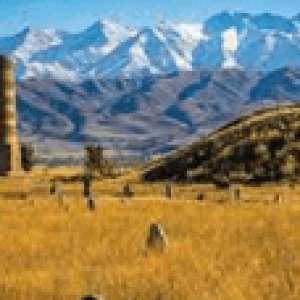A unique variety of cannabis from the Chui valley in Kazakhstan
When people talk about landraces - varieties bred by nature with unique psychoactive properties - they often think of Thailand, India and other distant countries. But the old ones know: very close, in Kazakhstan, there is a valley with hectares of "chuyka" - a pure sativa with a deep head effect. The legacy of either the ancient people who used it as a raw material, or the Turkestan governor Kolpakovsky, or the Soviet government. Whoever helped develop the unique variety of the Chui Valley, in the 60s, thanks to him, it became a place of "pilgrimage" for hippies from all over the world. So Chui hemp seeds very soon ceased to be associated with ordinary industrial raw materials.
Who sowed, sowed, and who harvested?
Where landrace developed in Kazakhstan, no one can answer for sure. According to some reports, sativa has always grown here - since ancient times - and the locals used it as a valuable raw material. Later, the authorities of the Union became interested in wild-growing hemp, but until the 60s, its growth was not hindered. On the contrary, cannabis was actively grown for industrial purposes - hemp fields occupied about 430 thousand hectares. The USSR began to "tighten the screws" after the adoption of the 61st UN Convention "On Narcotic Substances". In addition, the authorities realized that next to the “correct” industrial hemp, the “wrong” one, psychoactive, is growing. It was decided to destroy everything indiscriminately. True, this did not bring much success - hemp tightly entered the local ecosystem, and with the beginning of spring it sprouted again. By the 61st, thanks to the hippie movement, the fame of Chui marijuana had spread virtually all over the world. Its cultivation began to bring income to the locals - large enough not to have the desire to burn and dig up fields with "chuyka".
Another theory explains the appearance of the Chui sativa not as an abstract “it was like that from ancient times”, but by the actions of a very specific historical personality of the 18th century - General Kolpakovsky, who during the periods of absence of the current Turkestan Governor-General Kaufman performed his duties. He brought the future Chui cannabis seeds from India and ordered to sow the valley with them. The general was going to save the lands from the desert with “marvelous bushes” - part of the steppes was then really under the sands of the Moiynkum. The desert stopped growing, and overseas plants took root and adapted to the climate of Chu.
The uniqueness of Chui hemp
The Asian steppe has created a unique variety, the effect of which is compared only with Nepalese hashish. This is a long powerful high that is usually shared with others. Locals smoke one joint for 4-5 people, and everyone gets pure euphoria for several hours. Chui cannabis seeds give tall - taller than human growth - plants with thin leaves and large inflorescences.
The deep mental effect is explained precisely by the conditions of maturation in a sharply continental climate. While the DNA of a Landrace retains a memory of its properties, growing elsewhere will not necessarily produce the same outstanding results. That is why landraces are primarily interested in breeders. They use the exclusivity of natural varieties to create more adaptable hybrids.









